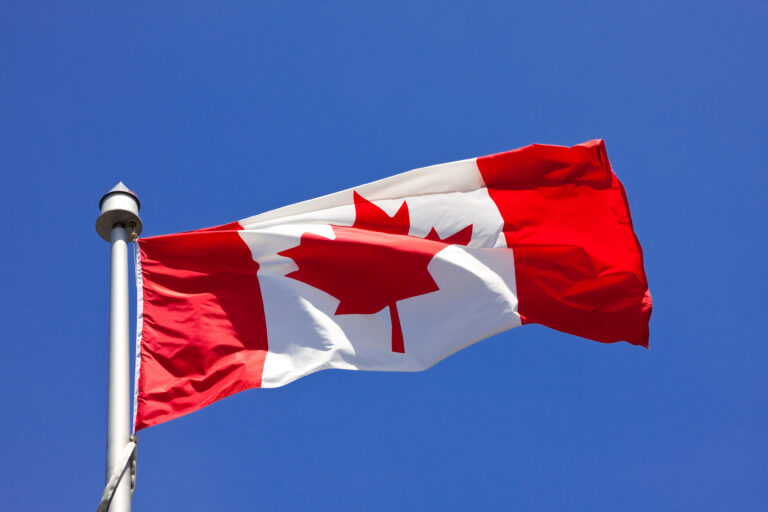Sales professionals are in hot demand in Canada as employers scramble to fill jobs begging for a want of suitable candidates in the wake of the post-COVID-19 economic boom, creating opportunities for foreign nationals to immigrate through the country’s Express Entry system.
“In 2023, sales and marketing professionals are facing extreme shifts in the way they work,” says human resources giant Randstad.
Read more:
MPNP issues 597 LAAs to candidates in March 9 draw
Express Entry Labour draw on Prince Edward Island sees 46 ITAs sent
Express Entry draws in New Brunswick issued 144 Invitations to Apply in February
“Many companies transitioned to remote work during the pandemic. After markets reopened, employers allowed their teams to continue working from home. As a result, teleworking is now seen as a natural privilege for industry professionals.
“Technology also continues to be a major driver in sales and marketing. As more businesses deploy advanced systems, it creates a growing demand for tech-savvy workers. Employers are looking for candidates with the experience and skills to leverage digital tools and platforms to track and improve performance on all fronts.”
Sales pros can immigrate to Canada through the Federal Skilled Worker program
In its Best Sales and Marketing Jobs in Canada for 2023 report on its website, Randstad lists 10 sales and sales-related occupations that are going to be hot in Canada this year.
They are, with their corresponding National Occupational Classification (NOC) codes:
- Sales Associate (NOC 64100)
- Marketing Coordinator (NOC 11202)
- Account Manager (NOC 11102)
- Store/Territory/Branch Managers (NOC 60020)
- Product Managers (NOC 60010)
- Account Executives (NOC 11201)
- Sales Manager (NOC 62010)
- Digital Marketing Specialists (NOC 11202
- Technical Sales Representatives (NOC 62100)
- SEO Specialists (NOC 21234)
The opportunities are certainly out there. The Indeed.ca job-hunting website lists more than 33,100 results for a sales job search.
“As you look closer at our list of most in-demand jobs in the sales and marketing sector for 2023, you’ll see new roles, such as sales associates, marketing coordinators and sales managers,” notes Randstad.
“Positions such as account managers, branch managers and product managers are also in high demand for 2023. Remaining on our list of top jobs from last year are the roles of account executives, digital marketing specialists, technical sales representatives and SEO specialists.”
Ottawa’s Jobbank job-hunting and career-planning website forecasts there will be 149,200 new positions for sales clerks alone in Canada during the decade starting this year and another 95,700 for sales supervisors.
Salaries for sales occupations vary significantly depending on the exact nature of the position and also because base salaries are often heavily incentivised with commissions, depending on the agreement between the employee and the employer.
“The average entry-level salary for sales and marketing workers is $67,300 per year, whereas the highest-performing sales and marketing professionals earn an average of $129,400 annually,” notes Randstad.
Mid-level sales position come with average annual salary of $90,000
“Mid-level positions earn an average annual salary of $90,000. It’s important to note that some sales professionals work on commission, so their overall pay depends on their ability to finalize sales.”
With the role of the sales professional changing greatly due to the work-from-home trend and the arrival of more powerful and sophisticated computer-based technologies, there is a great deal of variety in the actual work done by these employees.
While a retail sales rep might sell, rent or lease a range of technical and non-technical goods and services directly to consumers and is usually employed by a store or wholesale business that sells on a retail basis to the public, the SEO specialist has a very different job.
These experts use a variety of techniques and strategies to modify websites to ensure consumers are most likely to land on their employers’ e-commerce websites and buy those products. They analyze users’ needs to implement content, graphics, performance, and website capacity modifications.
There are no Canada-specific requirements for jobs in sales, given the broad range of positions that are covered but with communication being a central part of the job, a strong ability in at least one of Canada’s official languages is a must.
Foreign nationals hoping to gain their permanent residency in Canada can seize the opportunities offered by the current tight labour market to immigrate through the country’s many economic immigration programs.
Express Entry applicants’ profiles are ranked according to the CRS
With the arrival in effect of the National Occupational Classification 2021 on Nov. 16 last year, the jobs of marketing coordinator, store and territory manager, product manager, and account executive are all eligible occupations under the Federal Skilled Worker Program (FSW).
It’s one of three Express Entry system programs through which immigrants can apply for permanent residency online if they meet the eligibility criteria. The other two such Express Entry programs are the Federal Skilled Trades Program (FST) and Canada Experience Class Program (CEC).
There are also participating provincial immigration programs which use the Express Entry system.
Candidates’ profiles are ranked against each other according to a points-based system called the Comprehensive Ranking System (CRS). The highest-ranked candidates will be considered for an Invitation to Apply (ITA) for permanent residence. Those receiving an ITA must quickly submit a full application and pay processing fees, within a delay of 90 days.
Through a network of Provincial Nominee Programs (PNP), almost all of Canada’s ten provinces and three territories can also nominate skilled worker candidates for admission to Canada when they have the specific skills required by local economies. Successful candidates who receive a provincial or territorial nomination can then apply for Canadian permanent residence through federal immigration authorities.
Canadian employers can also recruit and hire foreign nationals through the Temporary Foreign Worker Program (TFWP) and the International Mobility Program (IMP).
The Global Talent Stream (GTS), a part of the TFWP, can under normal processing situations lead to the granting of Canadian work permits and processing of visa applications within two weeks.










